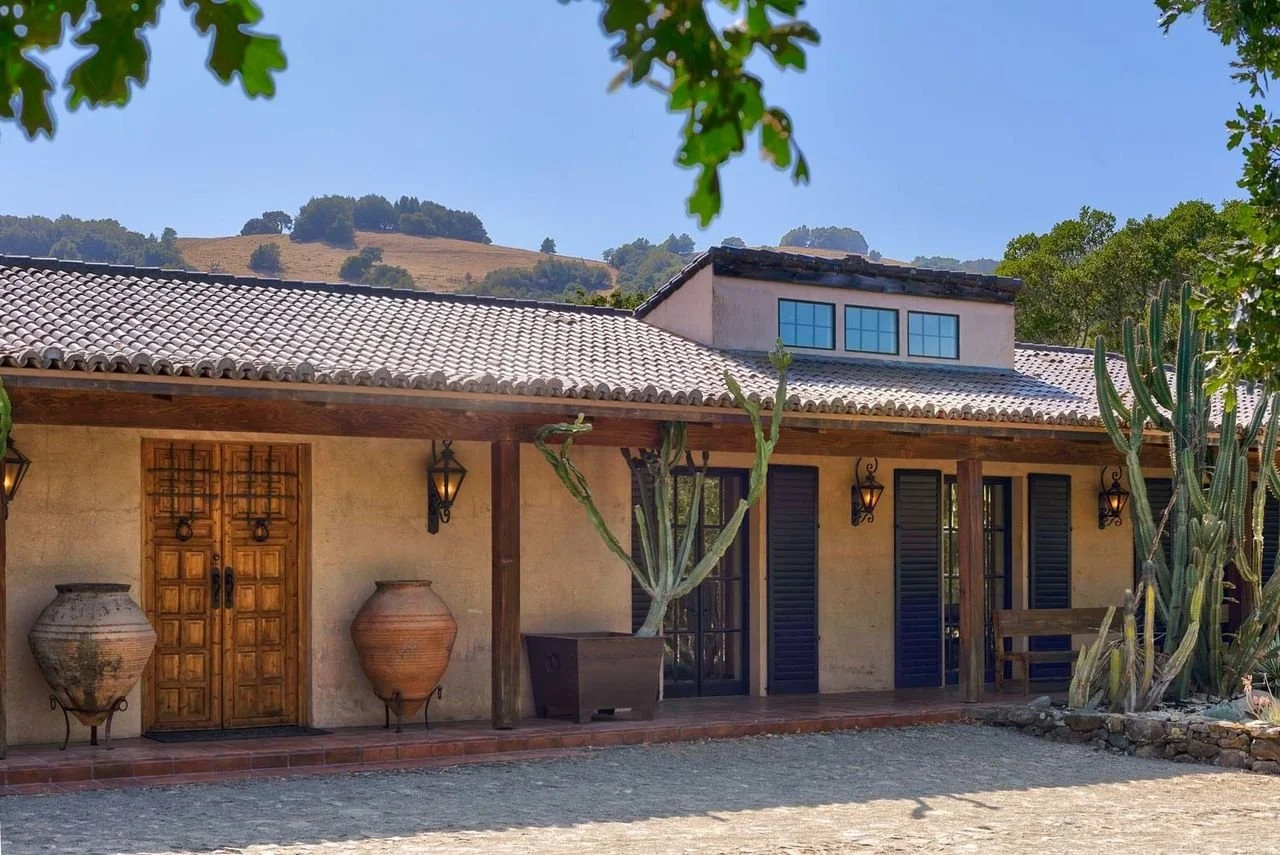Home Builders Are Turning to Natural Materials to Get Around Supply Chain Problems
Global supply chain delays are continuing to plague the U.S. home-building industry. A surge in demand for new housing, coupled with closures and delays in factories and transportation hubs brought on by the pandemic, mean that the materials most commonly used in home construction are in short supply. According to the housing market research firm Zonda, 90% of American home builders surveyed said that their business had been impacted by supply issues.
These problems are delaying openings and driving up prices on new construction. In November, the average cost of a new home in the U.S. was $416,900, a 19% increase year over year. It’s also creating challenges for home renovators, who face lengthy waits for the delivery of materials, home furnishings and more.
Rather than sit back and wait for critical supplies to become available, innovative architects and designers are turning to alternative methods in home building. And some are ahead of the curve on this front, like the Tucson, Arizona-based architecture firm DUST, which has long used materials native to the southwest, like rammed earth, volcanic rock and adobe brick to create new luxury residential homes.
“In the southwest, historically there’s a vernacular way of building, using the materials that are available,” says Cade Hayes, co-founding principal of DUST. “We look at that as a source of inspiration. Economically, ecologically, these materials make sense for where we live, and they’re abundant.”
Homes made from natural materials readily available on site not only allow builders to skirt supply chain delays, but also can result in sophisticated, high-end properties, like this Sonoma, California, home just sold for almost $4 million. The 3,475-square-foot adobe was built with rammed earth construction and sits on 8 acres in a gated community.
In addition to the unique aesthetic appeal of homes like this one, the use of natural materials to construct thick walls also provides natural heating and cooling, as well as fire-resistance, notes the listing agent David Costello of Compass. Buyers who value sustainability are also drawn to properties constructed using these methods.
At the same time, buyers of homes made with these materials need to be aware of the potential challenges, which include dealing with a home-building industry that is unfamiliar with the methods of rammed earth construction. Home inspectors and energy consultants often struggle to calculate the value of homes made with these materials, and the need for highly skilled labor in construction can drive up costs.
This means that buyers must be prepared for extra expenses and potential delays before their home is move-in ready. But in the long-term, they’re likely to see benefits when it comes to heating and cooling costs, thanks to the natural insulation provided by materials like adobe brick and rammed earth.
“Because it’s not standard, and not industrially backed, it comes at a premium,” Mr. Hayes said. “You have to hire architects, contractors, skilled labor—natural materials come with the need for more humans to enact the work, which comes at a cost.”
Getting Around Supply Chain Delays
The aggregate cost of construction in the U.S. has increased by 21% year over year, according to the National Association of Home Builders. This is due in part to delays in delivery and the rising cost of basic supplies like lumber, which the organization estimates has added $18,600 to the price of a new single-family home since fall 2021. Builders say that the average wait time for the delivery of some products has stretched from six to 16 weeks.
“Supply chain issues are continuing to impact all levels of construction, not just the construction of new luxury homes or developments,” said Ken Colao, president of CNY Group, a construction and development services firm in New York. “All the stakeholders, from designers to contractors and developers, have a vested interest in looking at alternatives.”
Those alternatives can range from turning to the use of materials easily found on-site—like rammed earth and adobe brick, in the southwest—to 3-D printing with recycled materials to create sustainable homes.
Steve Pallrand, founder of sustainable design firms CarbonShack and Home Front Build in Los Angeles, makes recycling central to home construction, using existing materials left over from demolition when creating a new or updated property.
“Reusing framing reduces the amount of new lumber and reduces costs to the job, especially important in a time of fluctuating materials costs and availability,” he said. “Another aspect of this strategy is when designing an addition to an existing house, we strategize which parts of the structure do not even have to be demolished, but can be preserved and integrated into the new plan.”
Adaptability is key to avoiding extended timelines and skyrocketing costs for home construction products. And builders and designers are finding there are other advantages to using unconventional materials, as well.
“We have been using concrete, which uses a mix of local rocks and cement. Not only are local rocks and cement a unique material but they are also very cost-effective and in the current climate, luckily not prone to supply chain disruptions,” said Felipe Escudero, founder and principal of Estudio Felipe Escudero, a design firm based in Quito, Ecuador. “Additionally, we have been using local volcanic rock as a finish for many surfaces. These materials also support local labor as it needs hand fabrication of molds, helping the local economy.”
Everyone involved in a new development project has an incentive now to seek out alternatives, with some analysts predicting that supply chain issues around materials like lumber, steel and home appliances and furnishings won’t begin to resolve until 2023.
“On a recent project we were engaged in the design phase early on involving a specific pre-caste facade. We knew it would have too long of a lead time, so we went with a hand laid brick façade instead,” Mr. Colao said. “It takes a team effort to figure out the workarounds and how to create a plan, it’s not just one definitive answer.”
What Buyers Need to Know
The use of unusual materials and techniques in home construction can result in properties that are aesthetically unique and sustainable. Homes made with rammed earth walls, for instance, come with natural heating and cooling benefits, making energy costs lower than in homes with traditional construction.
On the other hand, building homes like these also often requires the highly skilled labor of specialists, with most work done on site, which can drive up expenses. One builder estimates rammed earth homes can cost anywhere between 30%-70% more than a traditional build.
Buyers should also be aware of the effects of inflation on construction costs.
“Fixed price contracts in a time of inflation are very risky, so you need to explain to your clients the risks and be transparent,” Mr. Pallrand said. “The more you can make your costs transparent, the more likely you can have a conversation with the client about how to compensate for rising materials costs.”
Buyers may also encounter challenges when it comes to important milestones like home inspections.
“We know that materials like rammed earth and adobe perform really well in an arid environment, and can withstand environmental conditions,” said Jesús Edmundo Robles, Jr., founding principal at DUST. “But the industry doesn’t quite know how to quantify it, which makes it harder to use. It’s surprising that inspectors and energy consultants come back to us not knowing how to calculate things.”
Still, developers and buyers of new homes may find that it’s worth the hassle of turning to alternatives rather than face lengthy delays in waiting for conventional building materials.
“Buyers should also understand that supply chain issues are likely going to get worse before they get better, so workarounds will have to take priority as we adjust and find new solutions,” Mr. Colao said.



